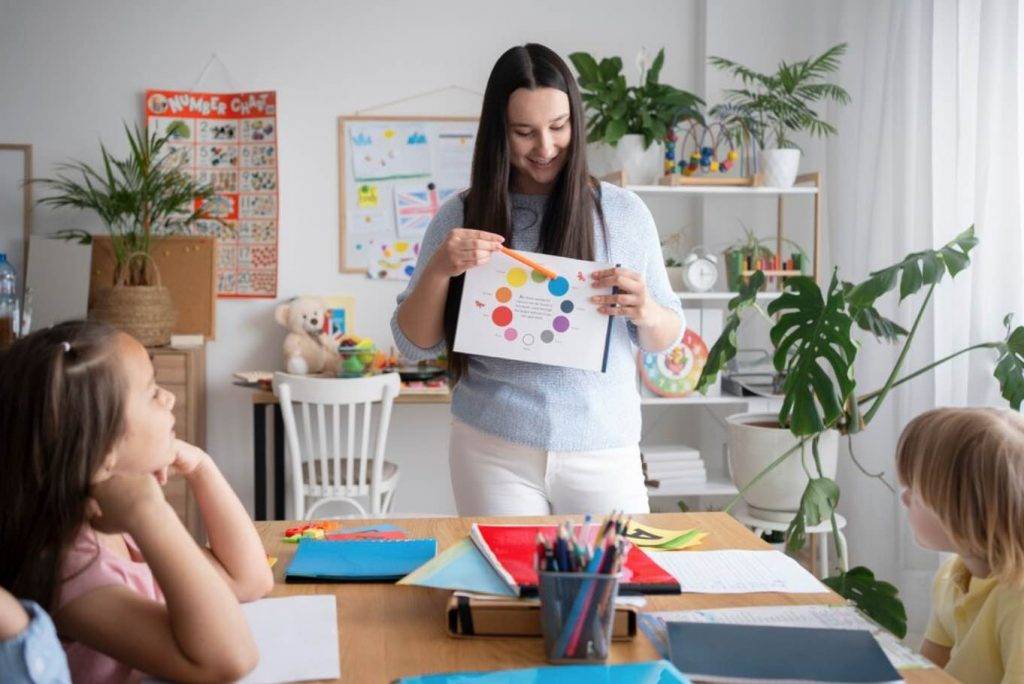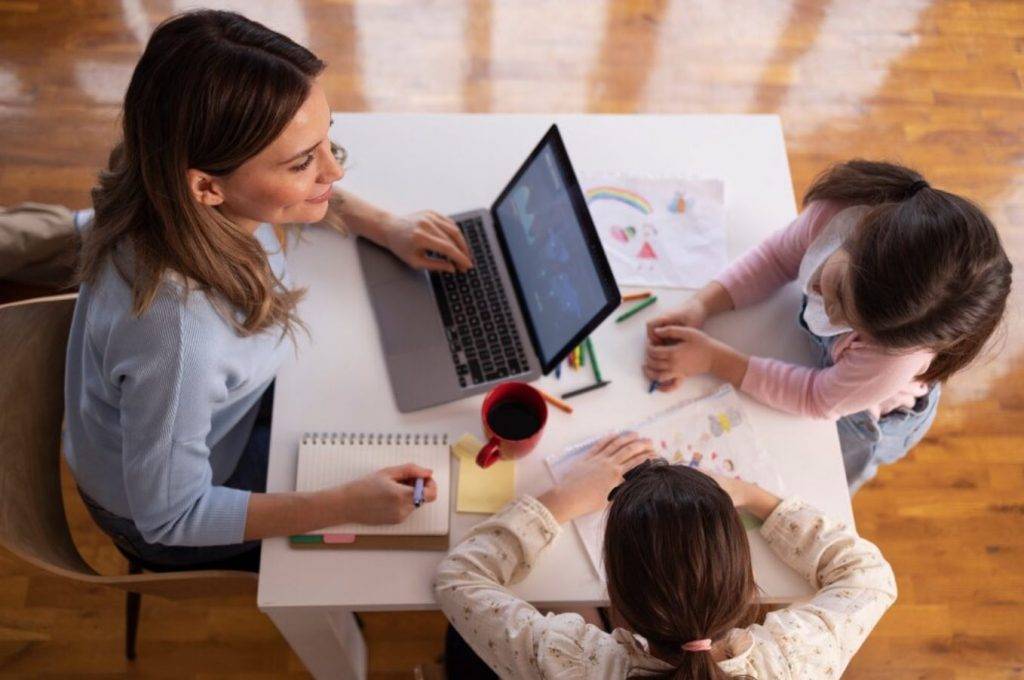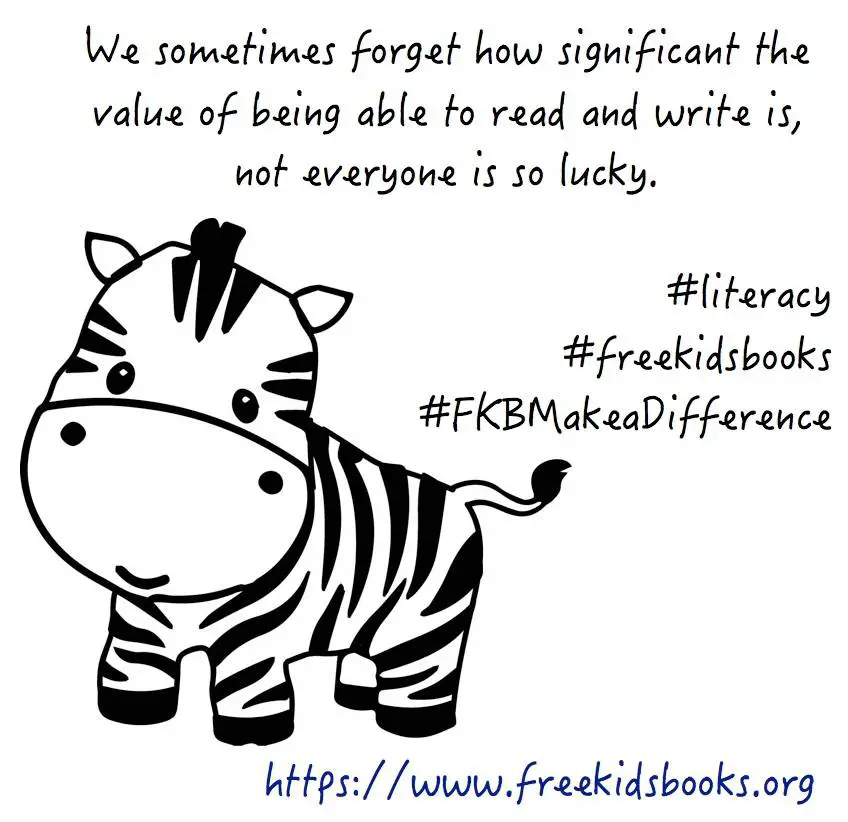Teaching effectively is more than just a skill; it’s an art. In today’s diverse and dynamic classrooms, educators face the challenge of meeting the needs of every student. This is where effective teaching strategies come into play. They are essential tools that can transform the learning experience, making it more engaging and productive for students.
This blog will explore 10 practical teaching strategies that significantly enhance classroom learning. These strategies are designed to be straightforward, adaptable, and suitable for educators in various teaching environments. Whether you’re just starting your teaching journey or looking to refresh your approach, these tips will provide valuable insights into creating a more effective and enjoyable learning experience for your students. Let’s dive into the world of classroom mastery and discover how to make learning more impactful.

1. Understanding the Modern Classroom
The modern classroom is a vibrant mix of cultures, abilities, and learning styles. Today’s students come from diverse backgrounds, each bringing unique experiences and perspectives. This diversity enriches the learning environment but also presents challenges. Educators must be adaptable, using various teaching strategies to meet these varied needs. Embracing this diversity means creating inclusive and engaging lessons for every student.
2. Interactive Learning
Interactive learning turns the classroom into an active space where students engage directly with the material. This approach boosts understanding and retention. For example, learning games for kids can turn complex subjects into fun, interactive experiences. These games encourage students to participate actively, making learning dynamic and enjoyable. Interactive learning also fosters critical thinking and problem-solving skills.
3. Collaborative Learning
Collaborative learning is all about students working together to achieve a common goal. This strategy teaches valuable skills like teamwork, communication, and empathy. When implementing group work, setting clear objectives and roles is important. Encourage students to share ideas and respect different viewpoints. Collaborative projects or group discussions are great ways to make learning a shared experience.
4. Use of Technology
Incorporating technology in education can greatly enhance learning. It offers interactive and personalized experiences for students. For instance, educational apps and online resources can complement traditional teaching methods. Technology allows for innovative approaches like virtual field trips or interactive simulations. Choosing technology that aligns with your educational goals and enhances the learning experience is important.
5. Continuous Assessment
Continuous assessment is key to understanding each student’s learning journey. It’s not just about grading but tracking progress and identifying areas for improvement. Effective methods include regular quizzes, class participation, and project-based assessments. These tools provide ongoing feedback, helping educators adjust their teaching methods to suit the needs of their students better. Continuous assessment also encourages students to reflect on their learning.
6. Differentiated Instruction
Differentiated instruction is about tailoring teaching to meet the individual needs of students. It involves recognizing that students learn in different ways and at different paces. Techniques include using educational worksheets designed for various skill levels, offering choices in learning activities, and using various teaching methods. This approach ensures that all students, regardless of their learning style or ability, have access to the curriculum in a way that is meaningful to them.
7. Classroom Management
Effective classroom management is crucial for creating a conducive learning environment. It involves setting clear rules, establishing routines, and maintaining a positive atmosphere. Good classroom management also means being fair and consistent in handling discipline. Techniques like positive reinforcement, clear communication, and active engagement can help manage the classroom effectively, ensuring that it remains a focused and respectful space for learning.
8. Real-World Learning
Real-world learning connects classroom lessons with everyday life, making education more relevant and engaging. This strategy involves using real-life scenarios to teach concepts. For example, a math lesson could involve budgeting for a school event, or a science class could study the local ecosystem. These activities help students see the practical application of their lessons, enhancing their understanding and interest.
9. Encouraging Critical Thinking
Developing critical thinking skills is essential for students to navigate the complexities of the modern world. Educators can foster these skills through activities that encourage analysis, evaluation, and synthesis of information. Debates, problem-solving tasks, and case studies are great ways to promote critical thinking. These activities challenge students to think deeply, question assumptions, and develop reasoned arguments.

10. Feedback and Communication
Constructive feedback and effective communication are vital in the learning process. They help students understand their strengths and areas for improvement. Regular, constructive feedback can motivate students and guide their learning journey. Communication is not just about conveying information; it’s also about listening to students’ concerns and feedback. Open and empathetic communication builds trust and encourages a more engaged learning environment.
11. Continuous Professional Development
For educators, ongoing professional development is crucial to stay updated with the latest educational trends and methodologies. It involves attending workshops, participating in online courses, and networking with other educators. This continuous learning enhances teaching skills and keeps educators inspired and passionate about their profession. Resources like educational journals, webinars, and professional learning communities can be invaluable for professional growth.
Conclusion
In the ever-evolving world of education, mastering the art of teaching is an ongoing journey. Throughout this blog, we’ve explored ten effective teaching strategies to help educators create vibrant, engaging, and successful learning environments for their students.
From embracing the diversity of the modern classroom to integrating technology, fostering critical thinking, and continuously improving through professional development, these strategies offer a roadmap to classroom mastery. By implementing these strategies and staying open to new ideas, you can create a classroom where students thrive, learning is not a chore but a joy, and where you, as an educator, find fulfillment and success in every lesson.
=
==========================================================================

Author’s BIO:










